 Back to the Be Inspired Blog
Back to the Be Inspired Blog
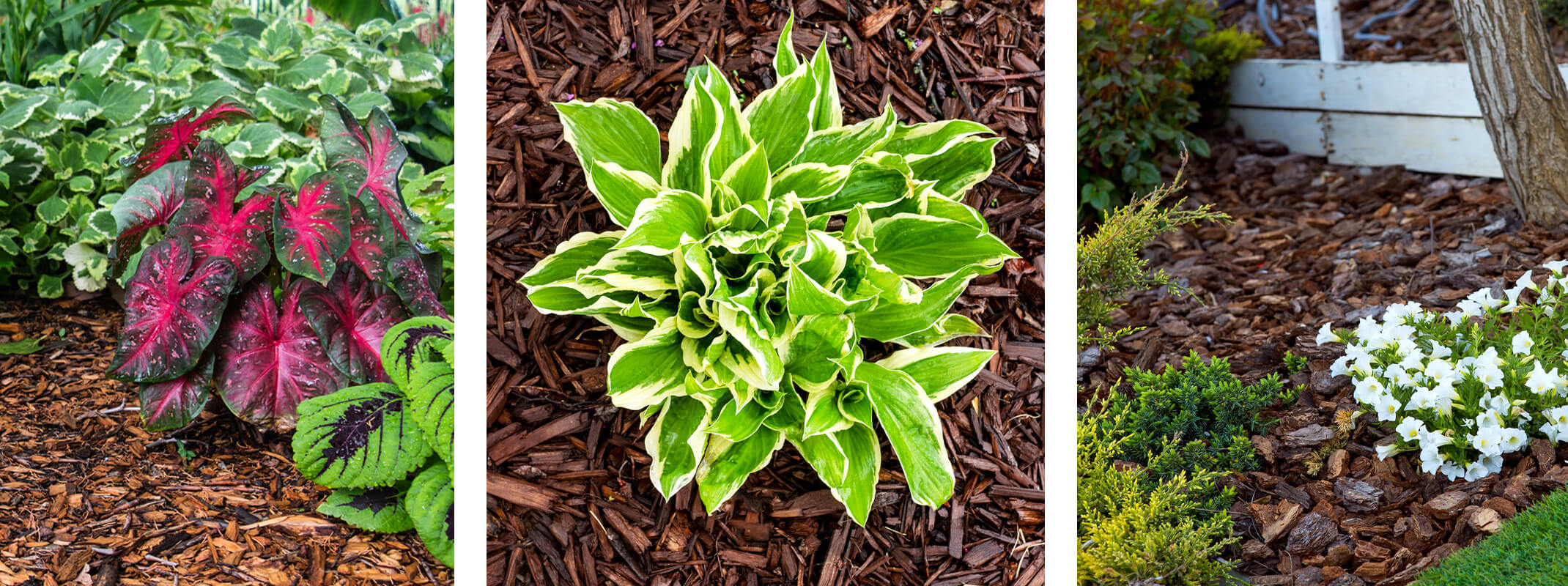
Let's Talk Mulch
Mulching – or covering a garden surface with a layer of mulch material – provides many advantages to your summer landscape but the biggest and the most important advantage is retaining water and water conservation. If you haven’t yet, now is a wonderful time to lay down some material. Don’t worry, we’re here to help make sense of mulch!
Benefits of Mulch
The overall advantage of mulch is that it acts as a barrier between the sky and the soil. This in turn does several things for your garden:
- Conserve Water – Mulch will reduce the amount of water lost to evaporation by shading the soil.
- Controls weeds – by blocking the sunshine that those pesky weeds desperately need to grow and spread.
- Prevents erosion – by protecting the soil from rain and irrigation, as well as, maintaining the soils moisture and temperature.
- Keeps the roots of your plants cool and moist – by adding a cooling, protective barrier over the soil to establish a consistent temperature.
- Natural & Organic matter added back into the soil – as it breaks down over-time, it can double as a fertilizer, depending on the material you choose.
- Create a tidy appearance - Not only are these materials functional, but they also provide an aesthetic benefit! Choose from a variety of different sizes, textures, and colors to find one that best suits your garden style. You’ll appreciate how mulch can make your landscape look tidy and polished--and help to reduce your water consumption!
Types of Mulch
There are plenty of types of mulch available to sprinkle around your garden, all with different purposes. Even compost can be considered a mulch! Here are 5 types that we recommend and what they’re best for:
Redi-Gro Bark Mulch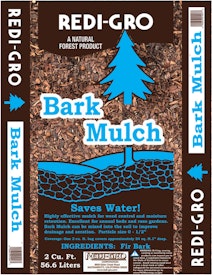
Smaller than pathway bark, Redi-Gro Fir bark averages ½ inch in size for use as a landscape cover. It improves water penetration and helps to conserve moisture and is excellent for weed control. When mixed into the soil, it improves drainage and aeration. Excellent for smaller planting areas. Can be used in potting soils for extra porosity.
Shredded Redwood Mulch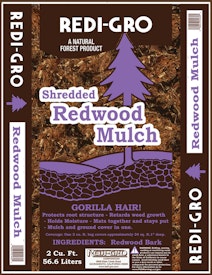
Shredded bark is another common and effective ground cover for your garden. Redwood mulch is a popular choice for its attractive reddish color and natural look. It leaves a lovely aroma of cedar while helping to retain soil moisture and suppress weeds. Redi-Gro Shredded Redwood Mulch is decorative and fibrous mulch that mats together, stays put and holds its’ color well. It helps to retard weed growth and retains moisture. Also known as gorilla hair. It’s a great choice for erosion control on sloped areas.
Medium and Small Bark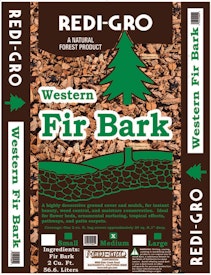
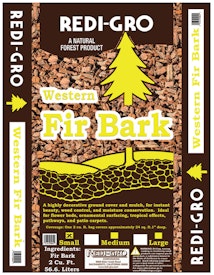
Medium and small Western Fir bark create a lovely decorative groundcover for all areas of your landscape. Nuggets are easy to apply to walkways, garden beds, and around your home and patio, helping to retain moisture and suppress weed growth. Redi-Gro Bark is a low-cost ground cover for carefree landscaping. Adds natural forest beauty to planters, flowerbeds, pathways, and patio areas. Helps retard weed and grass germination.
GardenStraw Premium Mulch (by HealthiStraw)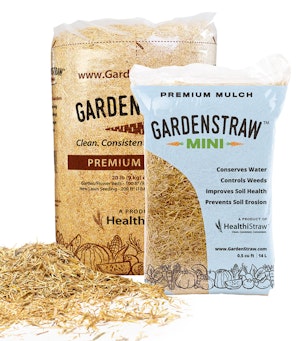
This sustainable and biodegradable wheat straw mulch has been specifically designed with the urban, vegetable gardener in mind. Using natural and additive free methods, it is cleaned with enhanced filtration to remove dust and nearly all wheat seeds. This straw mulch conserves water by up to 50%, stabilizes soil moisture and temperature, suppresses weeds, protects plants from disease, and improves soil health by increasing aeration, while reducing compaction and erosion. GardenStraw is clean, light, easy to use and aids in growing a healthier, more vibrant garden. For best results, apply a 2-3” thick layer in gardens or a ¼” thick layer for lawn seeding applications. Available in 2 sizes: 3 cubic foot and 0.5 cubic foot.
How Much Mulch Do I Need?
The first mulching question we tend to get from our customers is “which type of mulch should I buy?”, which is then usually followed by “...and how much of it do I need?” Finding the right material is only half the battle. Knowing how much of it to buy can also be a challenge if you’re less experienced with mulching!
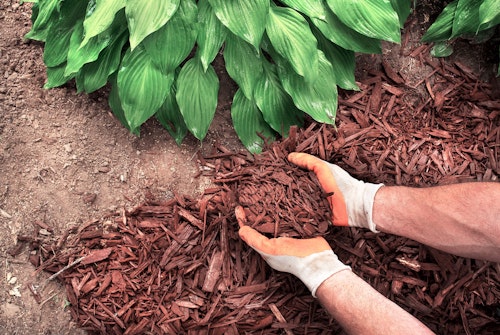
First of all, consider how thick of a layer you’re putting down. Generally, two or three inches of finer mulches is appropriate for filling garden beds, surrounding annual and perennial plants, and dressing walkways. Some plants can even get away with just a one-inch layer. Laying it on too thick can attract fungus and be harmful to plants, so surround them with a thinner layer and avoid letting the mulch touch the plant foliage or stems. If the purpose of the mulch is solely for suppressing weeds or grass and you’re not growing plants in the area, go with a thick layer of five or six inches.
Next, you can calculate or estimate how much you’ll need by following these steps:
Using a measuring tape, measure the length and width of each area you wish to cover, multiplying the two numbers together to find the area’s square footage.
If you are covering more than one area in your garden, add the square footage for each area together to find the total square footage you wish to cover. Let’s assume, as an example, the total area comes to a total of 100 square feet.
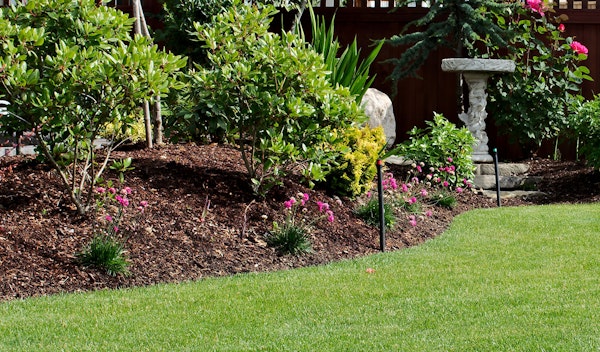 Determine the depth based on how many inches of mulch you want to use. In most instances, we recommend a depth of 2-3 inches.
Determine the depth based on how many inches of mulch you want to use. In most instances, we recommend a depth of 2-3 inches.
Divide the depth by 12 to convert the depth from inches to feet. For instance, a depth of 3 inches, divided by 12, equals 0.25 feet.
Multiply the square footage of the area by the depth in feet to find the required cubic footage of mulch. In this case, our equation is 100 square feet x 0.25 feet, which equals 25 cubic feet of mulch.
With this amount in mind, you should be able to calculate how many bags of mulch you’ll need to purchase. Depending on the product you choose, most bags range around - 2 cu. feet per bag.
Stop by any of our Bay Area locations to find the right mulch material for your garden.

